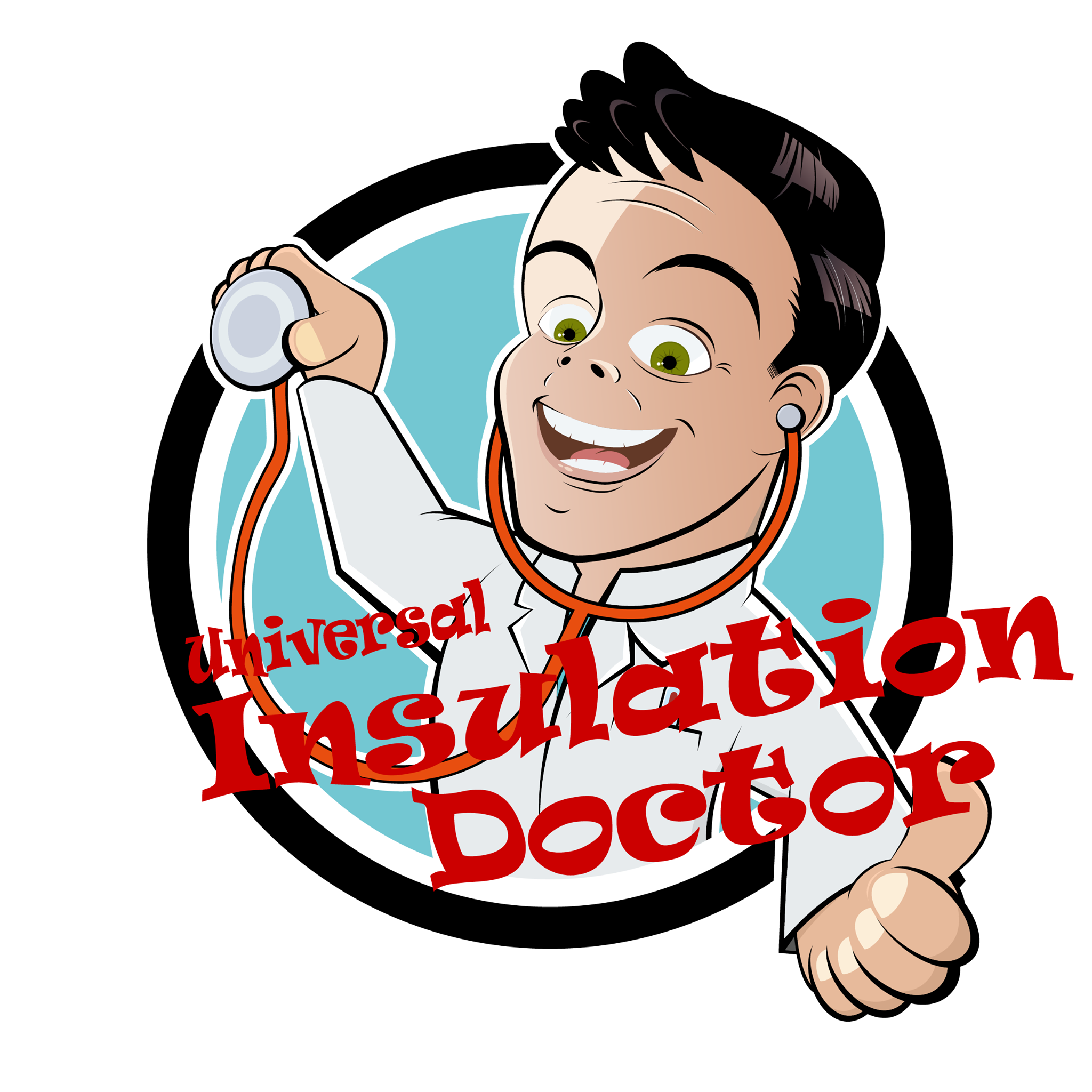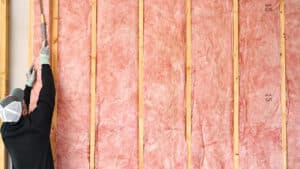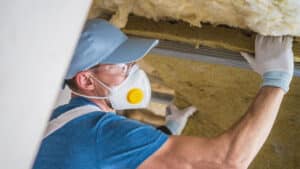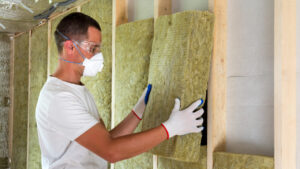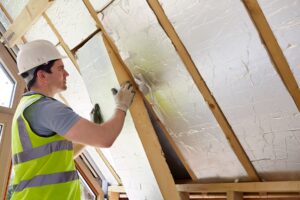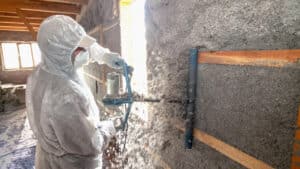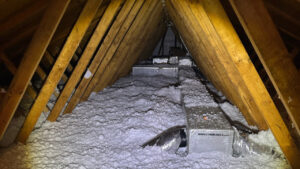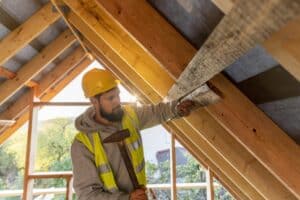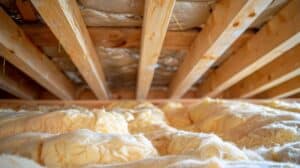If your home is your castle, then surely you want it to be a safe retreat from the hazards lurking in the outside world.
Yet, many homeowners are unknowingly living with hidden dangers within their walls—specifically, outdated or damaged insulation materials.
Insulation removal, while necessary for maintaining a healthy living space, can be rife with risks to your health ranging from mild skin irritation to more serious concerns like cancer, particularly when dealing with asbestos or mold contamination.
Keep reading to discover the crucial steps for protecting your household during insulation removal and replacement.
Potential Health Hazards During Insulation Removal
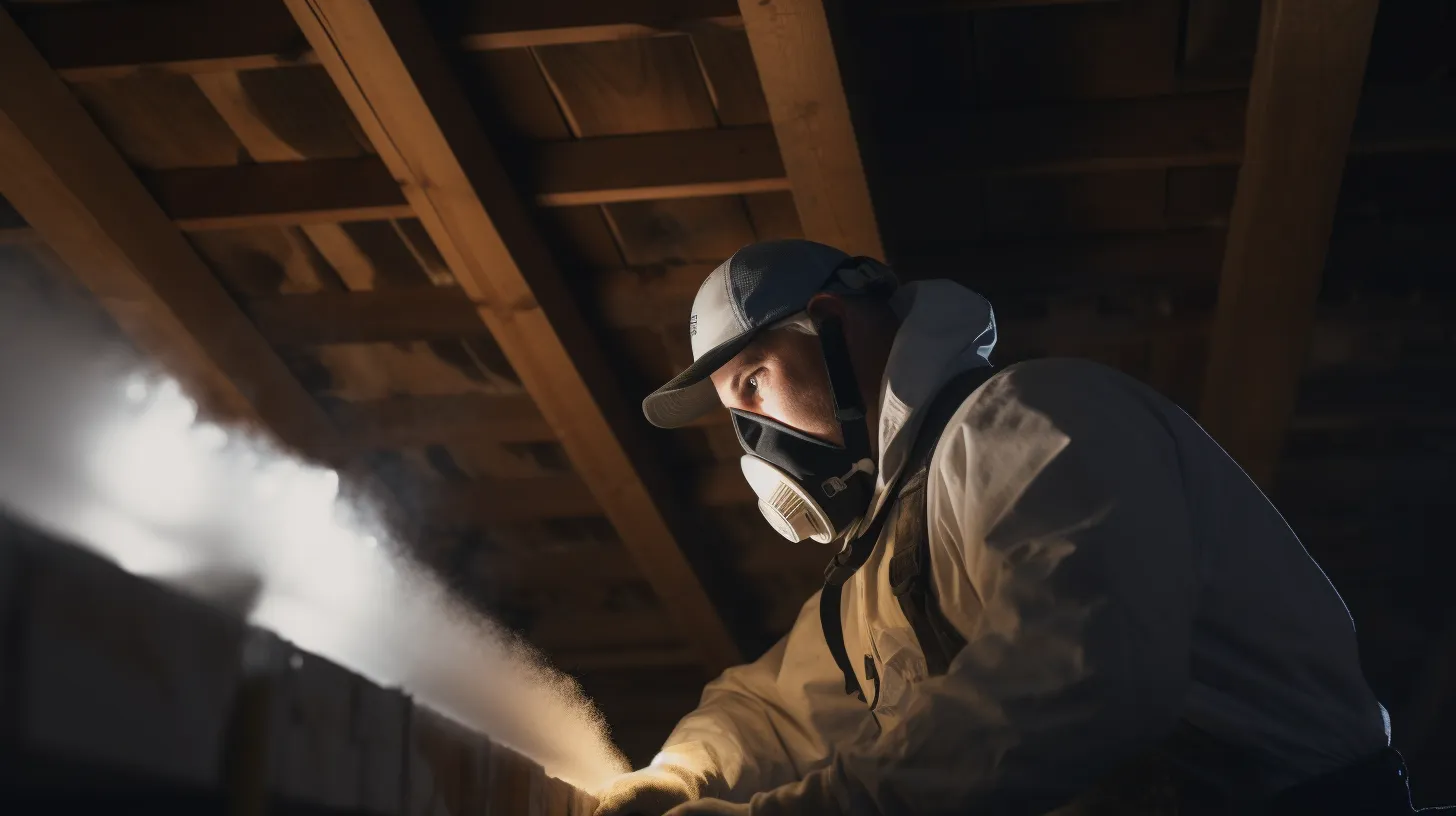
There are risks associated with working with old insulation. Asbestos exposure, for instance, has been closely associated with serious diseases like mesothelioma and lung cancer.
The other risk is the potential presence of mold spores and mildew during the removal process. Allergy symptoms and respiratory conditions can be exacerbated. Homeowners often underestimate the impact of these seemingly innocuous particles, but they can lead to significant health problems if not handled correctly. Here are some steps you can follow to lower the risk:
- Identify if your home has asbestos materials – they are most common in houses built before 1950
- Assess for mold growth known to trigger allergy symptoms or worse – look for black growths near moisture
- Guard against fiberglass particles that can cause skin irritation and lung issues – wear a respirator and cover all exposed skin with long sleeves and rubber gloves
- Check for signs of rodent infestation which can lead to hazardous droppings.
Dust and fiberglass insulation, often released into the air during removal, can also contribute to compromised indoor air quality. Inhaling these particles not only presents immediate discomfort but can also trigger long-term health conditions. Ensuring proper safety gear and procedures are in place is critical to mitigate these risks.
The expansive list of dangers underscores the need for a professional inspection before any insulation contractor begins the extraction. A comprehensive attic inspection, for instance, might reveal hidden issues, like a rodent infestation or a leaking roof, that could pose additional health hazards.
1. Asbestos vs. Fiberglass for Your Health

Asbestos insulation is a material once prevalent and esteemed for its fire-resistant properties and is now reviled for its link to lung disease and cancer, particularly mesothelioma and lung cancer.
While professionals acknowledge the detrimental health effects of asbestos, the discourse around fiberglass or mineral wool insulation paints a more convoluted picture.
Research into these materials yields mixed results, sparking debates over their potential to contribute to cancer risk when disrupted during insulation extraction processes.
Homeowners and insulation experts alike must navigate these complexities to ensure safety remains paramount.
Asbestos Insulation Is a Known Carcinogen
Asbestos fibers have been identified as a potent human carcinogen linked to conditions like asbestosis and lung disease, including cancer. For homes built before 1950, this type of insulation may still be present since it was the most popular insulation type for awhile. The disturbances during the extraction of asbestos insulation can release these toxic fibers into the air, making them a significant concern for both homeowners and professionals.
Regulatory protocols now demand strict adherence to safety procedures when dealing with asbestos materials, requiring specialized asbestos removal specialists to manage the delicate removal process. This regulatory oversight aims to minimize the risk of asbestos exposure, protecting individuals from the serious health consequences associated with this harmful substance. In such operations, comprehensive measures are employed to ensure that fibers are contained, and health hazards are averted.
Research Is Mixed for Fiberglass or Mineral Wool Insulation
The discourse around fiberglass and mineral wool insulation, materials popular for their thermal and acoustic properties, isn’t as clear-cut. Unlike asbestos, there’s ongoing debate in the scientific community regarding these materials’ potential to pose health risks. Some studies suggest that prolonged exposure to small fibers, especially during the extraction process, may still be a concern for respiratory health, though the evidence is not as definitive as it is for asbestos.
It is imperative that the insulation removal specialists you hire practice due diligence by keeping abreast of the latest research findings. You don’t want some Joe Schmo off the streets removing your insulation or to go at it yourself, alone with no research beforehand. Engaging insulation contractors who stay informed about the potential health effects of fiberglass and mineral wool insulation ensure that both workers and homeowners remain protected during the extraction and subsequent replacement of home insulation materials.
2. Vermiculite Insulation Asbestos Contamination

Vermiculite insulation has been a topic of concern for some homeowners, particularly regarding asbestos contamination. This naturally occurring mineral was used extensively for insulation in the past, and when disturbed, can release asbestos fibers into the air. As a consequence, its extraction calls for the same caution and specialized knowledge needed to prevent asbestos exposure.
Indications of vermiculite insulation within a dwelling unit often prompt a call for asbestos professionals. These experts are trained to conduct safe asbestos material handling, meticulously adhering to established safety protocols. Their expertise ensures that the health risks associated with asbestos fibers are appropriately managed.
During the vermiculite insulation removal process, specialists employ rigorous containment strategies to prevent the spread of asbestos particles. It is essential that this delicate operation is performed with precision to safeguard both the removal team’s and the home residents’ health. Without these protective measures, the risk of contamination and asbestos-related health conditions increases.
3. Skin Irritation and Respiratory Issues

Skin irritation and respiratory issues are among the more immediate health concerns homeowners face when dealing with insulation removal. Fiberglass insulation and spray foam, for example, can release particles that irritate the skin on contact:
| Insulation Type | Potential Skin Irritant | Potential Respiratory Irritant |
|---|---|---|
| Fiberglass Insulation | Glass Fibers | Dust and Small Particles |
| Spray Foam Insulation | Chemicals in Uncured Foam | Aerosolized Particles |
Respiratory issues can become a serious health problem, especially if the person has pre-existing conditions. Health risks can increase when the attic or crawl space is not well-ventilated during the insulation removal process.
Protecting oneself is essential; using safety gear like gloves and masks helps prevent direct contact with irritants. Hiring professionals who employ the right safety procedures significantly reduces the risk of health problems.
Moreover, addressing the root causes of insulation degradation, such as water damage or pest infestation, helps prevent the recurrence of the deterioration. A thorough attic inspection can discern these underlying problems and guide an effective course of action.
4. Harmful Chemicals From Spray Foam Insulation
Replacing your empty crawl spaces with spray foam insulation presents it’s own risks. These substances can become volatile irritants if not handled properly during extraction.
The mismanagement of polyurethane-based foam can unleash a cocktail of aerosolized chemicals into the work environment. It presents not just a potential respiratory hazard but also underlines the subtle complexities of maintaining high-quality indoor air.
It’s imperative for an insulation company to execute the removal of spray foam with due regard for the potential release of harmful chemicals. Skilled contractors employ strategized extraction methods that limit exposure and prioritize the health of all involved.
We do not recommend trying to install spray foam on your own and instead recommend you hire professionals like Universal Insulation Doctor.
How Can You Protect Your Home From Insulation Health Hazards?

Transforming your abode into a safe and energy-efficient sanctuary often starts with the intricate process of repairing or replacing insulation.
Prioritizing repair or removal protocols for damaged or antiquated insulation, ensuring the secure covering of exposed fiberglass, and allowing adequate curing time for spray foam insulation are all critical strategies.
Above all, selecting a safer, health-conscious insulation material can mitigate a plethora of risks, safeguarding against avoidable health complications while doing a great job on weatherization.
Test for Harmful Insulation
Embarking on attic or crawl space renovations begins with the pivotal step of testing for harmful substances. Knowing if you need to remove asbestos material or pay someone to help with mold remediation can help you identify health risks and determine your future budget.
Mitigating hazards effectively demands thorough analysis, which necessitates the expertise of certified professionals. Their sophisticated techniques detect asbestos fibers, mold problem, droppings and fiberglass particles, ensuring a safe environment before any removal or renovation begins.
| Substance | Health Risk | Testing Importance |
|---|---|---|
| Asbestos | Mesothelioma, Asbestosis, Lung Cancer | Detects presence in old insulation |
| Mold | Allergies, Respiratory Issues | Identifies spores before extraction |
| Fiberglass | Skin Irritation, Lung Irritation | Ensures containment of particles |
Repair or Remove Damaged or Old Insulation
Maintaining the integrity of a home’s insulation is vital for both energy efficiency and health. Damaged or outdated insulation not only fails to perform effectively but may also become a breeding ground for mold, or rodents, becoming a hazard for residents:
| Insulation Issue | Potential Health Hazard | Action Required |
|---|---|---|
| Damaged Insulation | Increased allergens, mold spores, and exposure to insulating particles | Inspection and repair or replacement by a certified insulation contractor |
| Outdated Insulation | Asbestos fibers, fiberglass particles, and higher energy bills due to poor insulation | Professional evaluation and potential removal and replacement with safer insulation material |
The decision to repair or remove should be guided by an experienced insulation company, one that can distinguish between salvageable materials and those requiring complete replacement. Especially in older homes, insulation removal might necessitate a meticulous process to avoid stirring up harmful substances and ensuring the air quality within the home remains uncontaminated.
Cover Exposed Fiberglass Insulation
Exposed fiberglass insulation is more than a nuisance; it poses significant health risks if left uncovered. The glass fibers can easily become airborne, leading to respiratory problems and skin irritation for the occupants. It’s crucial to conceal this insulation properly, a task best handled by a seasoned insulation contractor who can safely manage and encapsulate the material, ensuring no fibers escape into the living spaces.
A professional touch goes a long way in preserving indoor air quality and protecting residents from potential health issues. Insulation experts employ specialized techniques to cover exposed fiberglass, using sealants, barriers, or additional insulation to block any contact with the fibers. Their meticulous approach ensures that a home remains a haven, free from the threats posed by uncovered insulation.
Let Spray Foam Insulation Cure
One critical aspect of installing spray foam insulation that shouldn’t be rushed is the curing process. Adequate time for this phase ensures any potentially harmful chemicals are neutralized, which, if not allowed to settle, can be a source of indoor air pollution, resulting in health concerns such as respiratory irritation or allergic reactions.
Entrusting this task to skilled insulation professionals is a homeowner’s surest bet for safety. They possess the understanding of proper curing times and methods, preventing exposure to uncured foam’s irritants, and safeguarding the dwelling’s inhabitants from avoidable health issues tied to chemical emissions.
Choose a Safer Type of Insulation
Opting for a safer insulation material is not just about energy efficiency; it’s about prioritizing the health of everyone within the home. Advanced insulation products like cellulose or certain foam insulations have been developed to minimize health risks, providing effective thermal resistance without the adverse health effects associated with older, hazardous materials.
A responsible insulation company will recommend materials that are low in volatile organic compounds (VOCs) and free from harmful irritants like asbestos materials and fiberglass. They understand that the right choice in attic insulation can significantly reduce potential health issues such as respiratory problems and allergic reactions, ensuring a safe living environment.
Contact Universal Insulation Doctor for your Safety!

When it comes to the task of insulation extraction, your safety should be the forefront of any operation. Fortunately, the team at Universal Insulation Doctor specializes in addressing and mitigating the risks associated with insulation removal. Our expert approach ensures that any harmful substances, such as asbestos or fungi, are identified and properly handled to protect your health.
A thorough examination from our team by a certified professional can prevent unnecessary exposure to dangerous materials:
- An initial inspection to assess the current state and potential risks.
- Identification of any contaminants like mold spores or asbestos fibers.
- A precise, safe extraction process that safeguards clean air.
- Selection of safer, health-friendly insulation alternatives for installation.
With our local, experienced team, Universal Insulation Doctor executes each step with a high attention to detail, using the latest techniques and safety equipment to ensure a hazard-free environment. We stand by the importance of not only maintaining your home’s energy efficiency but also preserving the well-being of its inhabitants.
Whether your home requires attic insulation removal, crawl space cleaning, or an update to more health-conscious materials, trust in the knowledge and prowess of Universal Insulation Doctor. Reach out to them for peace of mind, knowing your insulation needs are met with the utmost care for your family’s health and comfort.
Frequently Asked Questions
Can exposure to insulation materials lead to serious health issues?
Yes, exposure to certain insulation materials, particularly asbestos insulation, can lead to severe health issues, ranging from respiratory conditions like asbestosis to life-threatening diseases like mesothelioma and lung cancer. It's vital to recognize that not all insulation types present the same level of risk; however, materials like asbestos fibers or moldy, water-damaged insulation can pose significant health hazards if not handled properly.
Is it safe to remove old insulation without professional help?
Removing old insulation without professional assistance poses significant health risks due to potential exposure to harmful substances such as asbestos fibers and mold spores. It's highly recommended to hire insulation specialists who have the necessary safety gear and expertise to manage the removal process effectively and safely.
How can I protect myself from asbestos exposure during insulation extraction?
To shield oneself from asbestos exposure during insulation removal, it's essential to wear appropriate safety gear, including a respirator with a HEPA filter, and ensure the space is well-ventilated. Moreover, hiring an asbestos removal specialist is highly recommended to manage the process safely and in accordance with regulatory standards.
What are the potential risks of using spray foam insulation?
While spray foam insulation is popular for its energy efficiency, potential risks include exposure to toxic chemicals during installation that can cause health problems such as respiratory issues and skin irritation. Additionally, improper installation may lead to reduced indoor air quality and increased fire hazard due to its flammability.
How can universal insulation doctor ensure the safety of my home during insulation removal?
Universal Insulation Doctor prioritizes your safety by strictly adhering to comprehensive safety procedures, which include utilizing proper safety gear and following strict protocols to mitigate any health risks associated with insulation removal. They ensure that their skilled professionals are equipped to handle hazardous materials and prevent contamination, helping maintain excellent air quality in your home.
